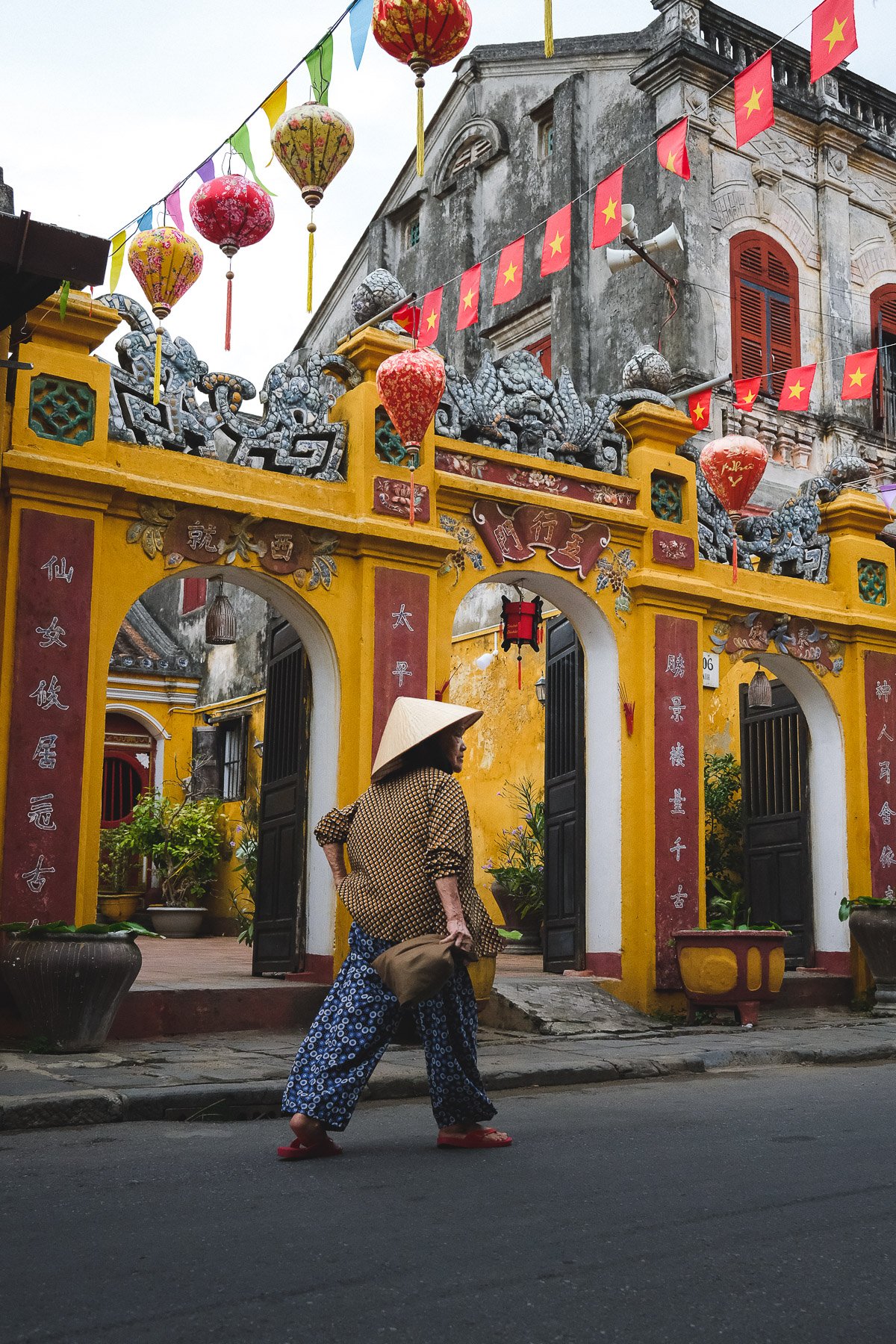After leaving the modern metropolis of Saigon, we travelled to the UNESCO World Heritage Site of Hoi An.
In the old town—and many of the surrounding streets—tight rows of timber houses are painted canary yellow. Bursts of colour greet you at every turn. Blue doors line the lanes. While bougainvilleas bloom and creep across the facades.
Hoi An looks as if it’s lifted straight out of a Hollywood set. Except this town is the real deal.
(That is, once you get past the streams of evening tourists—how dare they encroach on my experience? And the endless market stalls trying to sell the latest trinkets, fried food and even Instagram photo ops under hanging lanterns.)
Nestled on the banks of the Thu Bon River in central Vietnam, the town emerged as a bustling port for Asian and European merchants in the 15th Century. Then, in the late 18th Century, Da Nang to the north became the new centre of trade.
As a result, Hoi An remained largely undeveloped for two centuries—until it was restored in the 1990s by Polish conservator Kazimierz Kwiatkowski.
I was familiar with the sights of Hoi An having visited five years earlier. But that was on a brief night tour as our guide herded our group through the many other groups. Oh, and monsoon rain happened to flood the town soon after we arrived, causing a widespread blackout.
From what I did see, however, the town was stunning. So this time I wanted to experience Hoi An, not just see glimpses of it.
We booked three nights in town. And each day I followed a similar routine—yet new sights, faces and light awaited me at every turn.
I’d set off at daybreak and head towards the Ancient Town as deep shadows ran the length of the cobbled streets. And spotlights of sunshine moved across the walls.
Locals wandered down to the Chợ Hội An market or cycled by on bikes. (The old town was, supposedly, free from powered vehicles.) Merchants emerged from their storefronts, casting open baby blue shutters and setting their wares out on the sidewalk.
Strolling through, I’d spot a colourful frame and wait across the street for someone to pass by. Or I’d share a smile and ask to take their portrait. Those early hours, before the town had yet fully awoken, were pure photography bliss.
As I ambled by I took in sights I’d searched for. (And some stumbled upon.)
Like the ornate Cổng Chùa Bà Mụ pagoda and the Fujian Assembly Hall temple. The Japanese Covered Bridge—which dates back to the 1600s. And the Cầu An Hội bridge lined with oversized lanterns.
Soon my fellow tourists would emerge to pose beneath the bougainvilleas or explore the streets on hired bikes. And with the rising activity came more street photography opportunities.
But then the buzz became too much.
Crowds gathered and the sun baked all it touched. It was time to retreat into a cafe for sugary treats—Ư Chi Cafe near our hotel made a wickedly strong iced coffee—and rest until evening.
When the sun fell and I emerged from the comfort of AC, Hoi An became a town transformed.
Lanterns lit the streets. Candles floated and flickered down the river. Hawkers sold rainbow trinkets that flashed and flew like beacons in the night. While glowing carts sold an assortment of fried delicacies. (The sticky banana crepes were my weak spot.)
And if you’re lucky, it might even rain on you.
Lucky? Because you can take shelter in a nearby cafe as others clear out of town.
Then once the storm passes, the streets are cleared. Light glistens off every slickened surface. And the lanterns seem to multiply, reflecting in puddles on the cobbled streets.
I’d then return home to cool off and do it all again the next day.
Here’s what I saw.
Want to sharpen your skills and take stunning landscape shots? Check out my 8 essential guides and lessons, packed with insightful theory and practical tips.






















